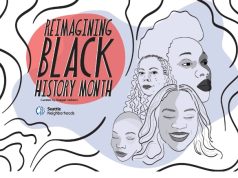Saltmine, Seattle’s largest web-development company, houses a unique mix of logic, musical talent and creativity. In Part I of our Saltmine profile, we flashed back to the company’s formative years, circa 1995, a time when the word “grunge” branded the Seattle music scene and also described the sound that came out of most PC speakers when streaming music over Real Audio’s RealPlayer 1.5 or 2.0.
Seattle’s music scene–from which Saltmine founders Jay Jarmon, Ben Thompson and Pete Gerrald emerged–became a spawning ground for many others who came to join the firm. So what do a group of musicians/Internet execs think about the roiling Napster controversy, the issues surrounding digital rights, and the harmonizing of Web business overall? Our followup interview with Saltmine CEO Jay Jarmon says it all.—LS
Seattle24x7: Jay, you began your career at Microsoft, you play a mean guitar and you have a deep appreciation of the local music scene. Very Paul Allenesque. What do you think of the Experience Music Project?
Jarmon: The EMP is tremendous. There are quite a few Saltmine employees who are immortalized there in one form or another. One employee, for instance, who was in Malfunktion with Andrew Wood, and then people like Rusty Willoughby who was in Flop and Pure Joy. I think there’s a natural correlation between the resource base that works in this new media form and musicians. When we started the company, we recruited our friends, and, of course, musicians know musicians.
Seattle24x7: Your staff meetings must resemble jam sessions.
Jarmon: Pete Gerrald, our CTO, was one of the best production engineers in the music business (as well as a Unix programmer) in his former life. He, Ben and I met at a recording project for Liar’s Club, which is my band. [A Liar’s Club compilation is available on MP3.com.] Well, Pete was the engineer, Ben was doing the design and I was writing the music. Last year, we had a company party at the Showbox. Pete got up on the stage — he looks very conservative in his business suit and short hair — and he picks up this beautiful Les Paul [guitar]. He puts his foot on the monitor and starts playing, and it’s like “Oh, my God. These guys are really good.”
Seattle24x7: As a musician, how do you feel about Napster?
Jarmon: Personally, I love Napster. You can find practically anything. Last night, I downloaded the “Pure Imagination” song from Willie Wonka [and the Chocolate Factory]. On a personal level, as a music fan, how can you get around the fact that Napster is out there? It’s amazing. If you’re in the recording industry, you have to make some kind of accommodation. It’s one of those times when the technology card has trumped the business card.
What will happen? I think the legal pressure that’s being brought to bear on MP3.com and Napster will result in a micropay concept. You’re going to have to pay a dollar or something for a song, but you’re going to have more “control.” I guess ultimately, the promise of the Internet is to give the consumer more control of the products they’re going to be consuming. You don’t have to buy the whole album just to hear the one song you really like.
As broadband increases, the same is true of video. We’ll pay royalties to the artist. The artists will probably make more than they did before. As a musician, I deplore the theft of intellectual property of all kinds.And as a company, we work to preserve intellectual property rights with regard to software.
Seattle24x7: How do you copyright/protect the things that appear onscreen for your clients? How do you differentiate similar product for different clients?
Jarmon: If we’re building something similar for two clients, how can I go to a RealNetworks, for example, and say: “Hey you know that thing I built for Muzak, this is completely different,” when it’s essentially the same piece of code? How can I promise clients intellectual ownership of something that may even be such a broad concept within the industry that it couldn’t possibly transfer intellectual ownership? What we’d rather do is build and license components that people can use in perpetuity. We’re constantly asking: How do we leverage what we do? How do we not reinvent the wheel eight or nine times, and, instead, take the best of what we’re doing and consolidate it.
The PGA Tour is a great example of a backend systems we developed, many of which are still in place right now (in this case, CBS Sportsline owns the franchise.) I can be in a restaurant in New York or Chicago, and let’s say they’re doing the Senior’s Tour. By going to ESPN.com, I can tap into a live scoring system that we developed for PGA three or four years ago.
Seattle24x7: A scoring system? How does it work?
Jarmon: The system actually goes out and grabs the scores off a live mobile unit in a truck on the course. The scoring is done in real-time per hole and relayed by people with handhelds or laptops to the truck. In fact, the speed is such that we’d have the scores on the Internet before they hit the Leader Board. We hosted PGATour.com for four years.
Seattle24x7: What other Saltmine projects exemplify your approach?
Jarmon: Stevedoring is a good example of logistics and integration. Stevedoring Services of America manages most of the ports up and down the West Coast. They need to track every container, whether it’s on boat, rail or truck, as it comes in. Bit by bit, we’ve added in additional functionality — tracking when does the container get on a truck, where does it go? We’re talking about all the container cargo moving to and from the West Coast of the United States — being able to digitize that — and have an understanding of how and where things are moving. Compare that evolution from the Fedex website tracking a package. That’s the kind of evolution that we’ve seen as a company, and the way the industry is changing.
Seattle24x7: Would you agree that Seattle Web development is ahead of the curve in many areas?
Jarmon: Over the years, if you were talking to Andrew Frye [FreeRange Media] or to Dan Fine [Fine.com, now Aris], they preached this unifying idea that the Internet is more than just a communications medium, more than an E-commerce platform, and more than a knowledge management and communications system. It’s a complete economy. I think that approach is very valid. As we see individual markets become a part of the global Internet economy, we’ll see this new reality taking shape. Seattle tends to see the bigger picture.
Seattle24x7: How do you think other Web-dev markets perceive Seattle?
Jarmon: In some sense, we’ve been spited for our identity by the Silicon Valley guys. It’s like: “You’re the Northwest, you’re associated with Redmond, you’re associated with an NT-based platform.” That’s obviously not the case. They’ve tried to pin the Silicon Forest on us and it just didn’t stick.
The vibe in Seattle has always been stick-to-it and get the job done. I think that’s what has distinguished Microsoft from some of those Silicon Valley companies. It isn’t as glitzy, it isn’t necessarily as glamorous. It prevailed because it worked hard. Saltmine has the same kind of root.
Seattle24x7: By the way, is it true that you have a Saltmine tattoo?
Jarmon: Yes, the tattoo is a personal statement about my commitment to the company. I figured that if I was going to ask people to get behind our brand, the right thing to do is to say “Well, I’m not just a mercenary CEO guy, I’m responsible for it. Good or ill, I’ll wear it for the rest of my life.”
Larry Sivitz is managing editor at Seattle24x7.com
=========================================
Next: In Part III, Saltmine Chief Creative Officer David Jolosky shares Saltmine’s recipe for creative success.
Saltmine LLC
http://www.saltmine.com
Seattle office
413 Pine Street
Third Floor
Seattle, WA 98101
Phone: 206.284.7511
Fax: 206.284.7875
On-Site Technical Services
10900 NE 8th Street
Suite 230
Bellevue, WA 98004
Ph: 425.956.1800
Fx: 425.450.0323
Year founded: 1995
Number of employees: 450
Amount of VC funding: $5M+ to MPL2 in 1995
Major clients: BP Amoco, Microsoft, AT&T, Frank Russell Company, PGA Tour, Muzak, Nordstrom, Puget Sound Energy, Washington Mutual, Wizards of the Coast




















